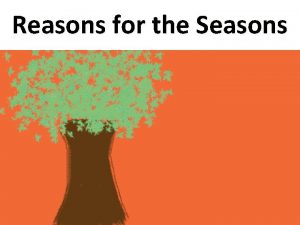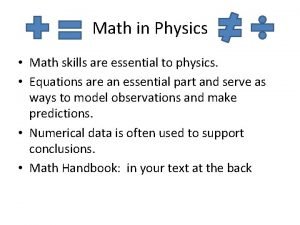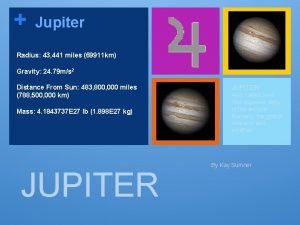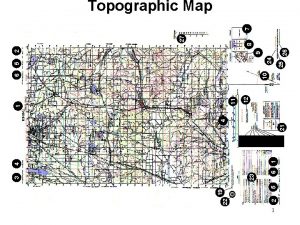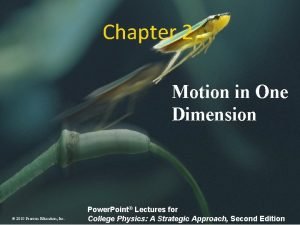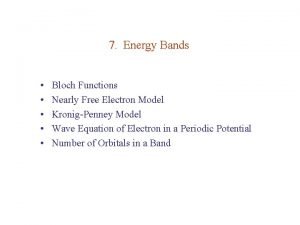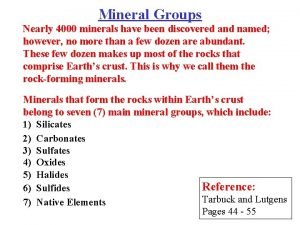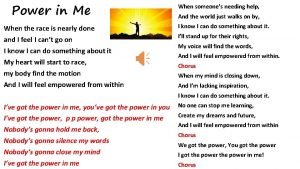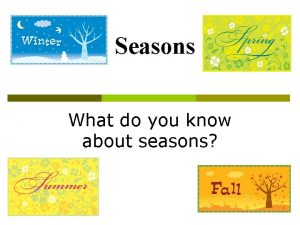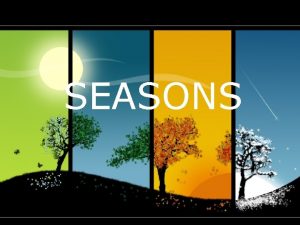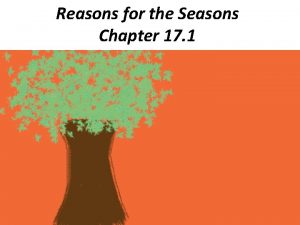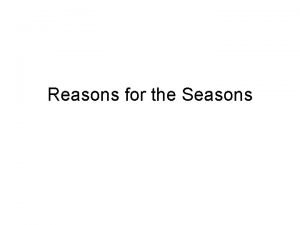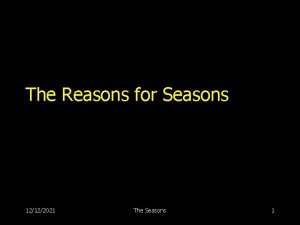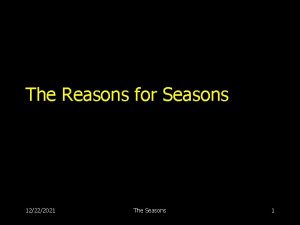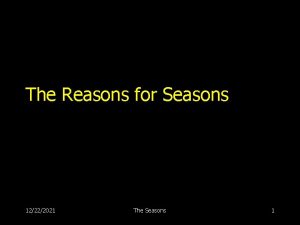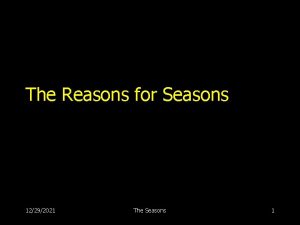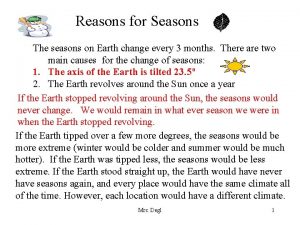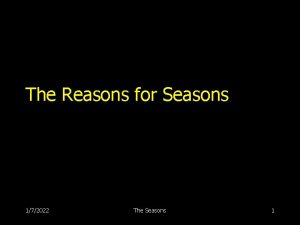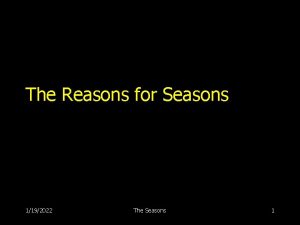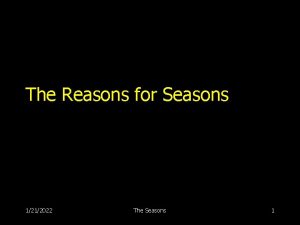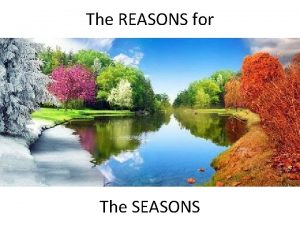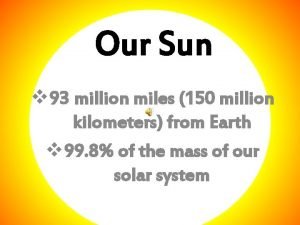Reasons for the Seasons Nearly 150 million kilometers






















- Slides: 22

Reasons for the Seasons

Nearly 150 million kilometers separate the sun and Earth, yet solar radiation drives Earth's weather.

Does the distance from the Sun make the Seasons? • NO • The Earth is actually farther away from the Sun when we have our Summer. July 6 th January 3 rd

Perihelion- Earth is closer to the Sun January 3 rd

Aphelion- Earth is farthest from the Sun July 6 th

Reason for the Seasons 1. The Earth’s tilt causes the seasons • It is tilted at 23. 5 degrees What is the angle of the tilt of the axis? 23. 5°


• The angle of the sun’s radiation hitting the Earth impacts the climate or temperature.

If the tilt were the only factor, then every location on Earth would have one season and it would never change.

2. Earth’s Revolution Causes the Suns rays to strike at different locations as the Earth orbits the Sun.

When northern hemisphere is facing the sun: • Summer Solstice June 21 st or 22 nd


SUMMER SOLSTICE Most direct rays over Northern Hemisphere Striking at Tropic of Cancer 23. 5° N Light = 15 hours (about 14. 27 (NC) Dark = 9 hours

Antarctica is completely dark for 24 hours and the Arctic is completely light for 24 hours!!!

Fall Equinox (September 22 or 23)

EQUAL amounts of daylight and darkness everywhere. Direct rays over Equator: Light = 12 hours Dark = 12 hours

• Winter Solstice - December 21 -22 • SHORTEST DAY !!! • Most direct rays over Southern hemisphere • Striking at Tropic of Capricorn 23. 5°S • Light = 9 hours Dark = 15 hours


Spring Equinox (March 21 or 22)

• EQUAL amounts of daylight and darkness everywhere. • Direct rays over Equator: • Light = 12 hours Dark = 12 hours

The Southern Hemisphere has opposite Seasons than us. . . WHY?

 Shortest day
Shortest day How much does the smartflower pop cost
How much does the smartflower pop cost Lady gaga 1 million reasons
Lady gaga 1 million reasons Si unit chart
Si unit chart Jupiter radius km
Jupiter radius km Kilometers to miles
Kilometers to miles 186 282 miles per second into meters per second
186 282 miles per second into meters per second Kilometers to meters
Kilometers to meters A jeepney ride costs 9 pesos for the first 4 kilometers
A jeepney ride costs 9 pesos for the first 4 kilometers Fence method for conversions
Fence method for conversions An inspector calls quiz
An inspector calls quiz Nearly 4000 minerals have been named
Nearly 4000 minerals have been named The middle ages spans nearly one thousand years.
The middle ages spans nearly one thousand years. What is the ocean floor called zone
What is the ocean floor called zone Vertical answer
Vertical answer Nearly anyone
Nearly anyone Nearly 4000 minerals have been named
Nearly 4000 minerals have been named A tiny elevation or hill like structures
A tiny elevation or hill like structures A steep slope with a nearly flat plateau on top
A steep slope with a nearly flat plateau on top What is a globe
What is a globe Nearly free electron approximation
Nearly free electron approximation Nearly 4000 minerals have been named.
Nearly 4000 minerals have been named. When the race is nearly done
When the race is nearly done
